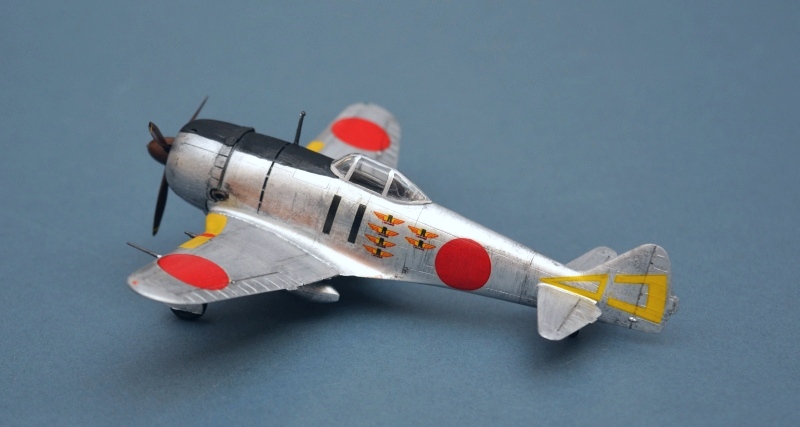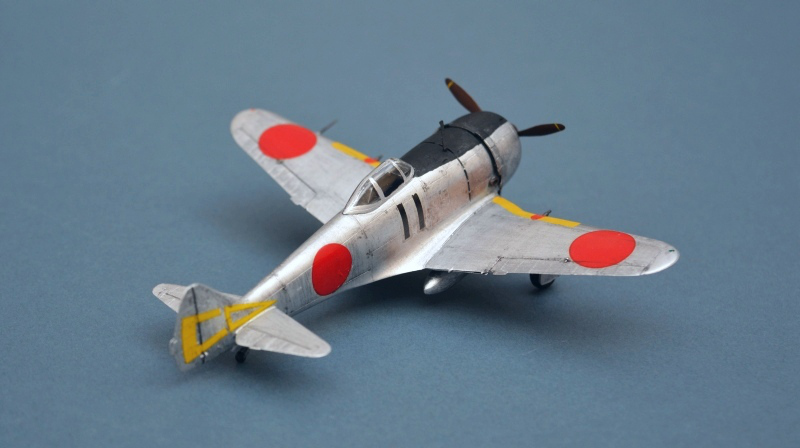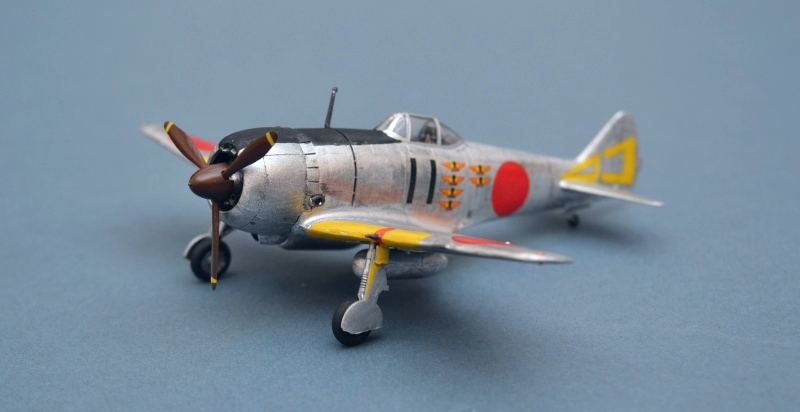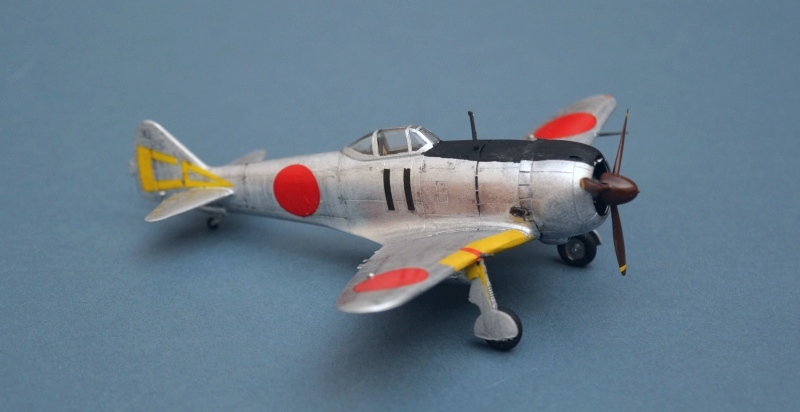February 2018
He 162 Volksjager
Ki-
www.gengriz.co.uk
Background Image: a Ki-
Nakajima Ki-
70th Army Fighter Squadron, Kashiwa Air Base, Japan, June 1945.
Aircraft of Captain Yosio Yoshida IJA,
Hasegawa 1/72
Like many Japanese designs, it suffered from the lack of strategic planning and co-
However ,its excellent rate of climb and heavy armament made it a useful counter
to the B-
Tojos were used across the Pacific theatre from 1941 onward, but toward the end of
the war were concentrated around the home islands. In the final months of WW2, some
aircraft were also used in suicide ramming attacks against B-
Following the Japanese surrender, a small number of Ki-
The He 262 was produced in a remarkably short period of time, following a Nazi Reichsluftfahrtministerium (RLM) design competition for a simple jet fighter that could (in theory) be flown by the young men of the Hitler Youth in defence of the homeland, after some basic flight training.
Heinkel’s design was ordered at the end of September 1944 and made its first flight just over 2 months later, on 6th Dec. Along with a BMW axial turbojet, the relatively simple design design featured small wings for speed, the first operational use of an ejector seat and was constructed mostly from wood to avoid the use of strategically important materials like aluminium that were in short supply. Construction was to take place within the vast secret underground cave factory complexes at Salzburg, Hinterbruhl and the Kohnstein “Mittelwerk”, and was intended to reach 2000 per month by April 1945.
Performance was excellent, with a remarkable top speed of 490 knots at height, albeit with limited fuel carriage resulting in a short duration for each mission and armament consisted of two 20mm cannon.
The He-
This is a very simple kit, typical of its era and first issued in 1970. Following the demise of FROG and the transfer of most of the company’s moulds to the USSR, this along with FROG’s other Axis model kits was passed to Revell, who have issued it on two subsequent occasions. As expected of its age and origin, it has a reasonable overall shape, but includes no cockpit, plus “see through” engine and undercarriage bays. Its main gear legs are also rather weakly attached and struggle to support the weight of the completed kit. The kit I have built here came as a bag of dirty bits for a few pounds, with no instructions but some useable decals. However, the FROG header shown above genuinely comes from my first ever build of this kit back in the mid 1970s when I really did pay 20p for it, from the post office in Largo Bay, Fife, if I remember correctly!
This is another well moulded early Hasegawa kit (apparently from the 1970s!) which can still hold its own with any modern moulding. It’s an easy build with no vices, although in typical Hasegawa style, its cockpit is very sparse and decals are a mixed blessing, being a little too thick and unstretchy for my linking. I also found the cockpit framing a little vague and looking at other builds on the internet, I can see I’m not the only one.
This issue came with 4 decal options covering two different versions of the type.
I chose the aircraft of ace pilot Captain Yoshio Yoshido, along with its 6 prominent
B-
Apart from that, there is really little to say except-
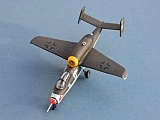
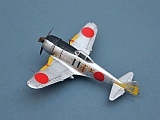
Have a look at many more Japanese and German models on my Adversaries Model pages:
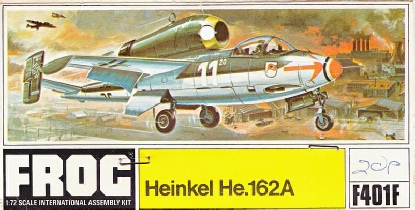


Three different boxings of this kit

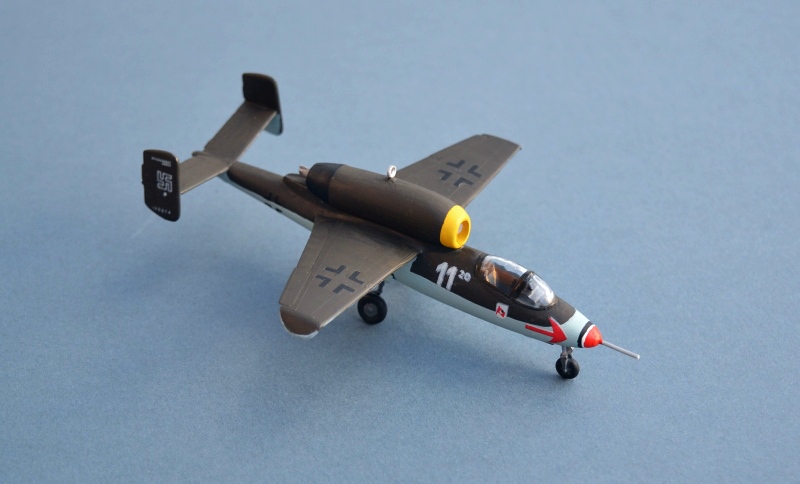
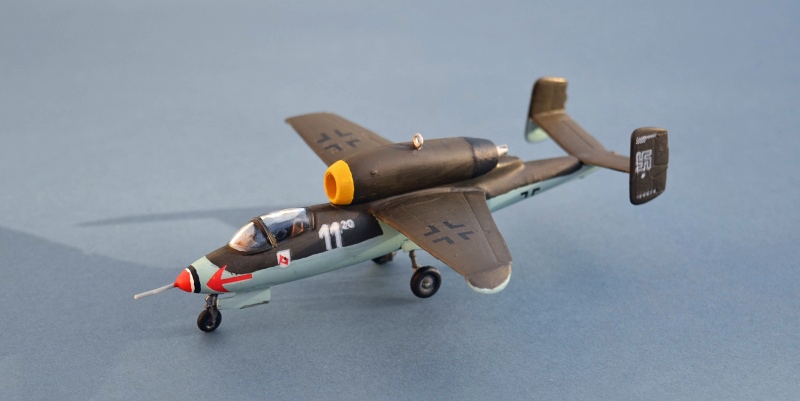
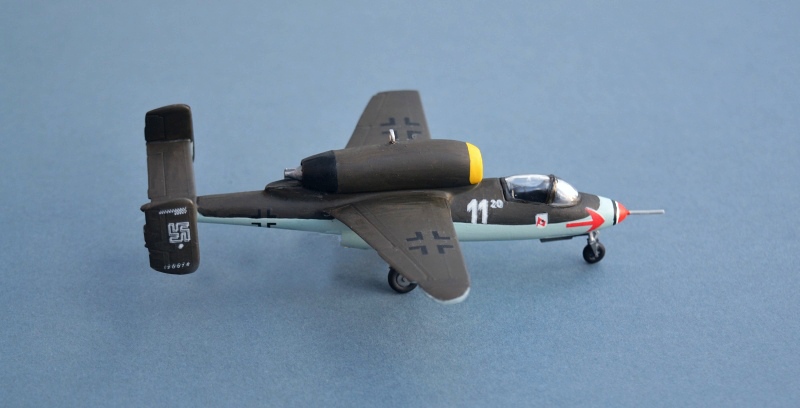
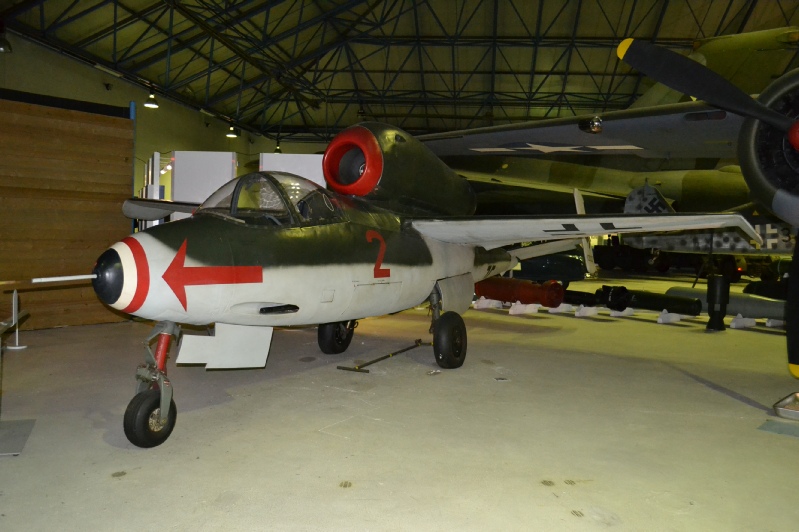
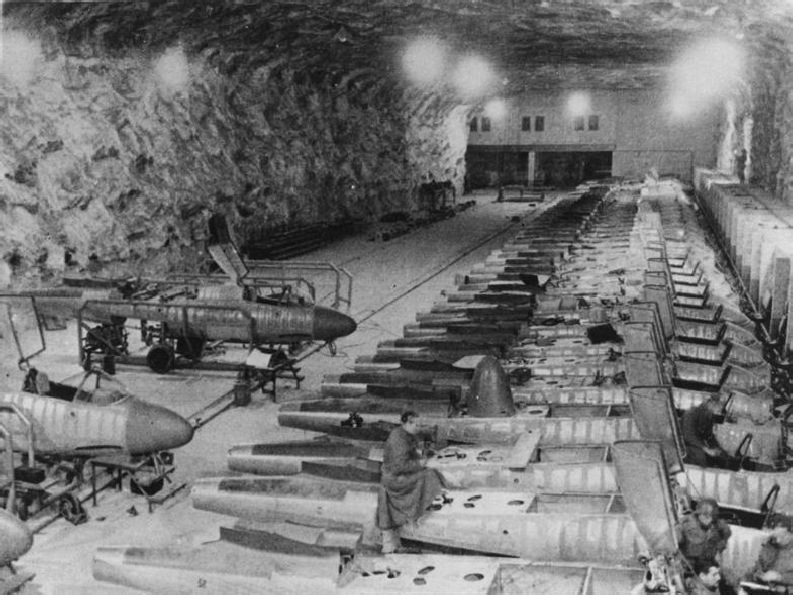
Above: a preserved He 162 at the RAF Museum, Cosford.
Below,: one of 3 underground factories producing He 162s (Bundesarchiv, Bild 141-
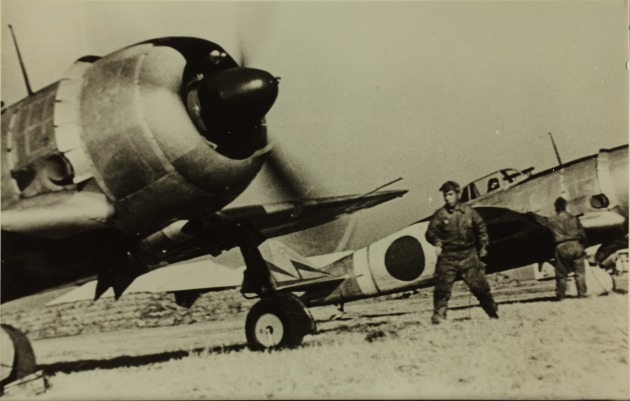

Rather like the Volksjager above, the Ki-
